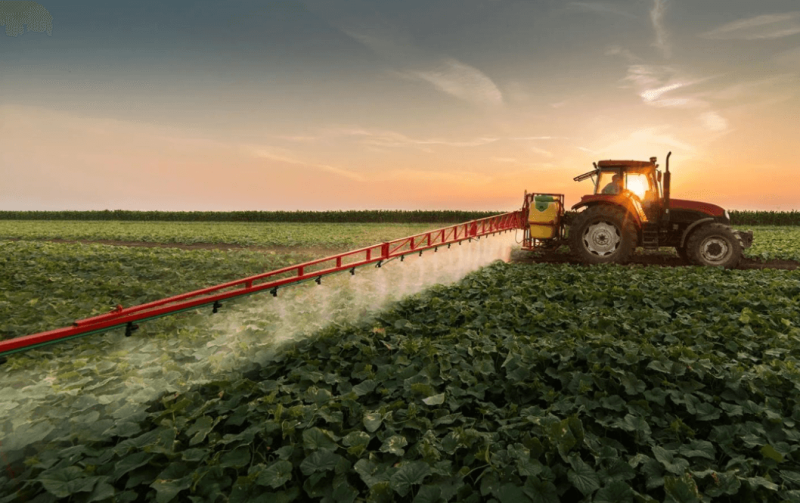A guide to the safety and efficacy of crop chemicals
Any discussion of crop chemicals must consider the broad sweep of agricultural history, the pivotal moments of technological innovation, and the diverging perspectives that have shaped the current debate around the use of agricultural chemicals and genetically modified (GM) and gene edited crops.
Agriculture’s evolution
Agriculture has evolved significantly over the past 10,000 years, transitioning from primitive farming practices to today’s technologically advanced operations. The Neolithic Revolution marked a significant shift from foraging to farming, transforming societies and the environment. Early agriculture relied on sustainable but labor-intensive techniques such as crop rotation, fallow fields, and manual weeding—techniques that were sustainable but labor-intensive and which limited productivity.
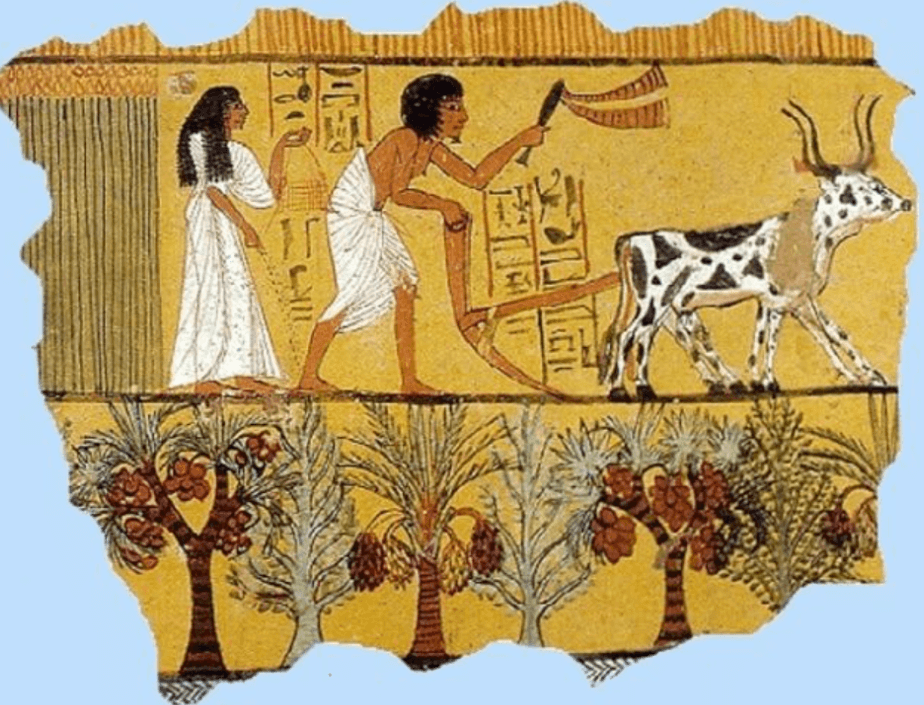
The 20th century brought about synthetic fertilizers and chemical herbicides, culminating in the development of GM crops. This period, known as the Green Revolution, significantly boosted global food production but also sparked concerns about environmental, health, and social issues. High-yield crop varieties and chemical inputs dramatically increased global food production yet raised concerns about environmental degradation, health risks, and social inequities.
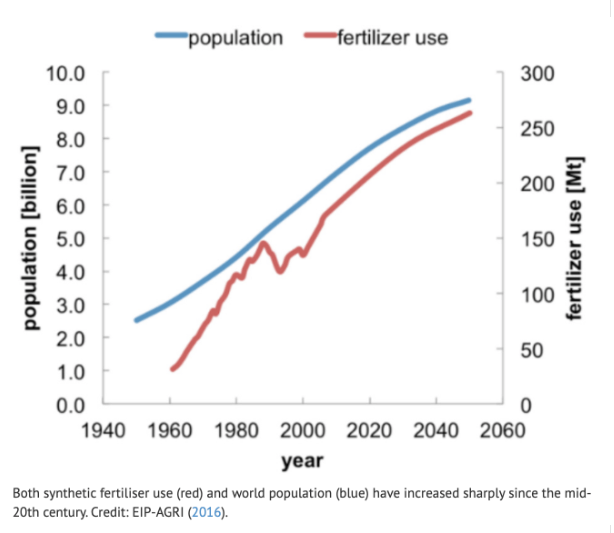
The debate today continues these historical trends, framed by a growing global population, climate change, and the need for sustainable development. Environmental activists and organic farming advocates argue that chemical herbicides and GM crops pose risks to the environment, biodiversity, and human health. They propose organic and agroecological farming methods as sustainable alternatives.
On the other hand, supporters of conventional agriculture, including scientists and farmers, argue that chemical herbicides and GM crops are crucial for sustainable food production. They emphasize the regulatory processes these products undergo and their proven safety and efficacy. They credit agricultural technology with improving soil health, conserving water, and increasing yields, and argue that herbicide-tolerant and pest-resistant GM crops can reduce the overall chemical load on the environment.
It’s critical that in the years ahead, policymakers strike an evidence-based balance between concerns raised by critics of chemical herbicides and GM crops and their manifest benefits, while preserving the scientific innovations and regulatory safeguards that underpin their use in conventional agriculture.
Herbicides in sustainable agriculture
 The 20th century was a defining period in the evolution of agricultural practices, particularly with the advent and widespread adoption of chemical herbicides. Prior to this development, weed control was primarily manual or mechanical, involving intensive labor and tillage practices.
The 20th century was a defining period in the evolution of agricultural practices, particularly with the advent and widespread adoption of chemical herbicides. Prior to this development, weed control was primarily manual or mechanical, involving intensive labor and tillage practices.
The emergence of synthetic herbicides in the mid-20th century, such as 2,4-D in the 1940s, brought about a revolution in weed management by providing an efficient and less labor-intensive method of controlling a broad spectrum of weed species. This innovation was a key component of the Green Revolution, which also saw the introduction of synthetic fertilizers and high-yield crop varieties, leading to a dramatic increase in food production worldwide.
However, the extensive use of chemical herbicides and the reliance on a limited number of these chemicals led to concerns over environmental degradation, including impacts on soil health, water quality, and biodiversity, as well as the emergence of herbicide-resistant weed species. This led to a re-evaluation of agricultural practices and a growing interest in sustainable agriculture methods, including integrated weed management and conservation tillage practices such as no-till farming.
Tillage vs. no-till farming
The choice between tillage and no-till farming depends on several factors. Here’s a breakdown of when each method is preferred, along with organic vs. conventional considerations:
No-till farming advantages:
- Erosion control: No-till farming, by leaving the soil surface undisturbed, significantly reduces soil erosion compared to traditional tillage.
- Organic matter accumulation: Crop residues in no-till systems contribute to higher soil organic matter levels, enhancing soil fertility and resilience.
- Water efficiency: The undisturbed soil and organic matter in no-till systems improve water retention, benefiting areas prone to drought.
- Weed control: Tillage can be a tool for weed control by burying weed seeds and disrupting their germination process. However, it can also bring dormant weed seeds to the surface, requiring additional control measures.
- Soil amendment incorporation: Tillage helps incorporate organic matter (like compost or manure) into the soil, improving fertility.
Traditional tillage disadvantages:
- Soil degradation: Conventional tillage disrupts soil structure, leading to compaction and reduced fertility over time.
- Erosion risk: Tillage practices expose soil to wind and water erosion, causing significant topsoil loss.
- Organic matter depletion: Frequent tillage accelerates organic matter decomposition, reducing crucial soil organic carbon levels.
- Fuel costs and time: Tillage requires multiple passes with machinery, increasing fuel consumption and labor costs.
No-till agriculture, HT crops, glyphosate and herbicide resistance
GM herbicide tolerant (HT) technology adoption has resulted in important changes in the profile of herbicides used, largely in favor of more environmentally benign products. It has also played an important role in facilitating changes in farming systems, by enabling farmers to better capitalize on the availability of glyphosate (as a relatively low-cost, broad-spectrum herbicide) and move away from conventional plough-based to no tillage (NT) and reduced tillage (RT) production systems in North and South America.
Glyphosate (or Roundup) brought to market by Monsanto in the mid 1970s and now owned by Bayer) is an ideal herbicide, says international weed authority Dr. Stephen Powles. He’s called it a “once-in-100-years breakthrough.”

According to Bayer’s account of the history of glyphosate as quoted in No-Fill Farmer:
In 1970, most farmers believed they had no choice but to use herbicides and tilling to control weeds. At the time, most herbicides were pre-emergent, meaning they created a chemical barrier on the surface of a field and killed weeds when they sprouted through this barrier and came into contact5 with the herbicide. To be effective, pre-emergent herbicides had to spread when they were applied to fields, ensuring a consistent, even barrier against sprouting weeds. They also needed to stay active for a long time so they could continue to be effective after the spring rainy season.
These two traits were environmentally problematic because pre-emergent herbicides could wash into streams and ground water, potentially affecting wildlife and fish.
The original Roundup herbicide was different. It was found to decompose into natural products — carbon dioxide, phosphoric acid and ammonia — and also found to be safe for humans and wildlife.
This change in production system enabled by glyphosate paired with GM crops has reduced levels of greenhouse gas emissions (GHG) emissions from reduced tractor fuel use and additional soil carbon sequestration. According to the UN’s Food and Agricultural Organization, herbicide-resistant GM and GE crops have great potential in the simplification of weed management. Handled judiciously and through Integrated Weed Management, these crops enable no-till systems, thus reducing erosion or allowing for later weed control which may increase biodiversity in the field. However, there has been some overreliance on the use of glyphosate by farmers in some regions, and this has contributed to the development of weed resistance.
Case study on herbicide use: Saskatchewan
A notable case study published in 2024 demonstrates the real-world impacts of herbicide use on sustainability in Saskatchewan, Canada, from 1991 to 1994 and from 2016 to 2019. This research highlights a significant shift towards more environmentally friendly herbicides, and a reduction in the amount of active ingredient applied per acre. The environmental impact of the top five herbicides used in the latter period was 65% lower than those used in the earlier period, with a 45% reduction in active ingredient per acre. This transition was facilitated by the adoption of no-till farming practices and supported using herbicides that allow farmers to control weeds without disturbing the soil.
Technological advancements
The evolution of herbicide technology has played a crucial role in reducing the environmental footprint of weed control. Key advancements include:
- Selective herbicides: The new generation of herbicides is designed with precision in mind. They target specific weed species, minimizing collateral damage to crops and non-target plants. This focused approach reduces the need for broad-spectrum chemical applications, thereby lowering the environmental impact.
- Improved formulations: Modern herbicides are engineered to stay where they are applied. These improved formulations reduce drift and volatilization, ensuring that adjacent areas are not inadvertently exposed to the chemicals.
- Precision application technologies: The advent of technologies such as GPS-guided sprayers has revolutionized herbicide application. These advances allow for pinpoint accuracy, reducing overuse and minimizing runoff into waterways.
- Biodegradable herbicides: Research is paving the way for herbicides that break down more quickly in the environment. This innovation reduces the risk of long-term soil and water contamination.
- Integrated weed management (IWM): IWM represents a holistic approach to weed management, combining chemical, biological, and mechanical methods to manage weed populations effectively and sustainably. The goal of IWM is not to eradicate all weeds but to maintain weed populations at manageable levels, with minimal adverse effects on the environment.
-
- Chemical methods: These include the judicious use of herbicides, applied in a targeted manner to minimize environmental impact. Herbicide-resistant crops can also play a role, though they require careful management to prevent the development of resistant weed populations.
- Biological methods: This strategy involves the use of natural weed predators, parasites, and diseases to control weed populations. For example, certain insects or pathogens are specific to a weed species and can be introduced as biological control agents.
- Mechanical methods: Mechanical weed control includes tillage, mowing, and hand-weeding. Modern approaches also incorporate advanced technologies like robotic weeders to target weeds precisely without harming the crops.
The integration of these methods allows for more effective and sustainable weed management, reducing reliance on chemical herbicides and mitigating potential environmental impacts.
-
Increased crop chemical usage and health concerns
Addressing health concerns in the context of increasing food production to meet future demands involves navigating a complex landscape of scientific research, regulatory oversight, and public perception. This task is essential to reconcile the goals of food security, health, and environmental sustainability. Intensive sustainable agriculture, which balances the use of advanced crop chemicals with soil preservation and environmental considerations, can pose several health challenges:
- Exposure to agrochemicals: Prolonged or improper exposure to agrochemicals, such as pesticides and fertilizers, can lead to serious health issues. These can include diabetes, reproductive disorders, neurological dysfunction, cancer, and respiratory diseases.
- Antibiotic resistance: The use of antibiotics in agriculture can contribute to the development and spread of antibiotic-resistant bacteria, posing a significant public health risk.
- Pathogen transmission: Intensive farming practices can increase the risk of pathogen transmission, potentially leading to the spread of zoonotic diseases.
- Chemical residues: Chemical residues from pesticides and fertilizers can contaminate water sources and food chains, posing risks to human health.
- Environmental health risks: Intensive agriculture can lead to environmental degradation, including soil erosion, water contamination, and loss of biodiversity. These environmental changes can indirectly impact human health.
It’s important to note that sustainable agricultural practices aim to mitigate these risks. For instance, integrated weed management, as mentioned above, combines chemical, biological, mechanical, and cultural control methods to optimize weed control while promoting sustainability. Additionally, precision agriculture can optimize resource utilization, minimize inputs, and mitigate environmental impacts5. However, ongoing research and innovation are needed to further reduce these health risks and promote truly sustainable agriculture.
Agricultural sustainability research
Scientific research plays a foundational role in understanding the health impacts of chemicals used in agriculture. A prime example is the Agricultural Health Study (AHS), a comprehensive, long-term project initiated in 1993. The AHS aimed to assess the health effects of pesticide exposure on farm families in Iowa and North Carolina. This extensive study encompassed over 89,000 participants, including licensed pesticide applicators and their spouses.
- The AHS yielded mixed results. Some studies within the project linked pesticide exposure to certain health outcomes, such as an increased risk of specific cancers (e.g., prostate cancer among applicators with high pesticide use) and respiratory conditions. However, for many pesticides, notably glyphosate, there was no strong evidence of association with cancer or other diseases.
- The AHS underscores the effectiveness of protective measures. For instance, the use of personal protective equipment (PPE) has been shown to significantly reduce harmful exposure levels among pesticide applicators.
These nuanced findings highlight the importance of continuous monitoring and the development of safer agricultural chemicals. They underscore the need for ongoing research to further understand and mitigate the potential health impacts of agricultural chemicals.
Remember, the goal of sustainable agriculture is not just about increasing productivity; it’s also about ensuring the health and safety of those who produce our food and the environments in which they work. As we continue to advance in our understanding and practices, we move closer to achieving this balance.
Regulatory perspectives
Regulatory agencies such as the Environmental Protection Agency (EPA) in the United States and the European Food Safety Authority (EFSA) in the European Union play crucial roles in assessing the safety of herbicides and setting guidelines for their use.
- EPA: The EPA evaluates pesticides and herbicides before they can be marketed in the U.S., assessing a wide range of potential health and environmental impacts. This process involves a comprehensive review of scientific data on toxicity, environmental fate, and human exposure. The EPA also establishes maximum residue limits (MRLs) for pesticides in food, ensuring that any residues present do not pose a risk to consumers.
- EFSA: Similarly, the EFSA provides scientific advice to inform European policies and legislation on food and feed safety, including the assessment of pesticide residues. EFSA’s risk assessments are based on a detailed analysis of scientific data, with the aim of protecting human health, animals, and the environment.
These independent regulatory bodies continually review new data, including findings from studies like AHS, to update guidelines and ensure safety standards reflect the latest scientific understanding.
Public perception vs. science of weed control
There is a notable gap between public perception and scientific evidence regarding the safety of herbicides and pesticides. This discrepancy can be attributed to several factors:
- Media influence: Sensationalized media reports often highlight the risks of pesticide exposure without providing adequate scientific context, leading to heightened public concern.
- Misunderstanding of risk: The public and the media rarely differentiates between the presence of pesticide residues, which indicates hazard, and actual risk. Regulatory thresholds are designed to be well below risk levels considered harmful. This tendency to misinformation is exploited by two prominent hazard agencies — International Association for Research on Cancer and the Ramazzini Institute—which sometimes partner with activist environmental groups ideologically opposed to synthetic chemicals.
- Distrust in institutions: Skepticism towards regulatory agencies and the agricultural industry — so-called Big Ag — feed doubts about the safety of agricultural chemicals, even when scientific evidence and regulatory assessments support their controlled use.
While there are valid concerns linked to agricultural synthetic chemicals, it’s important to rely on scientific evidence and regulatory assessments when forming opinions about the best balance for modern farming. There is not a ‘one-size-fits-all’ best approach. Ongoing research and advancements in sustainable farming practices continue to address these challenges, aiming to balance agricultural productivity with environmental and human health.
Glyphosate: Controversy and scientific consensus
Glyphosate has played a significant role in advancing sustainable agricultural practices. Its effectiveness as a broad-spectrum herbicide has made it a critical tool in no-till and conservation tillage systems, key components of sustainable agriculture. These farming practices offer several benefits:
- Soil Health and Carbon Sequestration: No-till farming, facilitated using glyphosate for weed control, significantly reduces soil erosion, enhances water retention, and increases soil organic matter. This contributes to improved soil health and has the potential to sequester carbon, mitigating climate change.
- Reduced fuel consumption: By eliminating the need for mechanical weed control, glyphosate use in no-till systems reduces fuel consumption and greenhouse gas emissions from agricultural machinery7.
- Biodiversity: Conservation tillage practices supported by glyphosate use can lead to greater biodiversity in agricultural landscapes, providing habitats for a variety of organisms67.
In recent years, glyphosate has become a focal point for critics of intensive agriculture who argue that it poses significant risks to public health and the environment. Concerns have been raised about its potential carcinogenicity, impact on biodiversity, and contribution to the emergence of herbicide-resistant weeds.
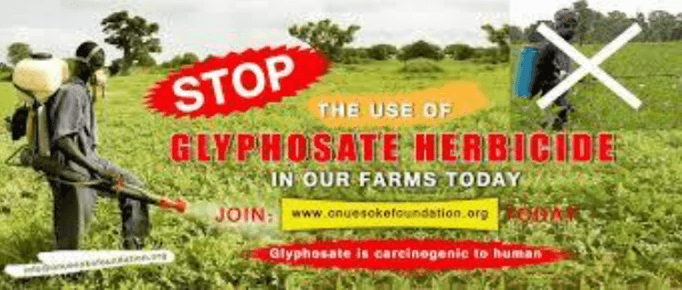
These concerns intensified in 2015 after the International Agency for Research on Cancer (IARC), a hazard agency, classified glyphosate as “probably carcinogenic in humans”. It based its classification on “limited evidence in humans and sufficient evidence in animals”. Over its 40-year history, IARC has assessed more than 1,000 substances and activities for potential hazard and identified only two that it did not link to cancer. Arsenic, coffee, sunbathing, hairdressing, red meat, and drinking hot beverages are all possible or probable cancer causes, according to IARC. Drinking beer or wine is considered far more hazardous to the public than glyphosate is to farmers. Yet it was IARC’s monograph on glyphosate that revivified the anti-biotech/anti-chemical environmental activist community and fueled an onslaught of tort court cases.
No global government agency bases its regulations on IARC’s quirky evaluation template. Its classification of glyphosate contrasts with the global consensus. The Environmental Protection Agency (EPA) in the United States, the European Food Safety Authority (EFSA), and almost two dozen other regulatory and oversight agencies have consistently found that when used according to approved label directions, glyphosate is unlikely to pose a carcinogenic risk to humans. These assessments are grounded in comprehensive reviews of extensive scientific evidence, including studies on glyphosate’s environmental behavior, toxicity, and exposure risks.
Downloadable summary with links to studies is here.

Downloadable summary with links to studies is here.
The discrepancy between the opinion of the one hazard agency, IARC, vs. more than a dozen risk agencies, underscores the potential to politicize risk evaluations in which different methodologies and criteria can lead to divergent conclusions. It also underscores the importance of relying on the full body of scientific evidence, considering both potential risks and the context of actual use in the field.
Gene editing and herbicide resistance: A new frontier?
Herbicide resistance in weeds poses a significant threat to global food security and agricultural sustainability. Crop biotechnology, encompassing both gene editing and transgenesis, offers promising solutions to combat this challenge. Here’s how:
- Targeted modifications: CRISPR-Cas9 and other gene editing techniques can precisely modify a plant’s genome at specific locations. This allows scientists to introduce mutations that confer tolerance to a particular herbicide, reducing the need for increased application rates or more potent herbicides.
- ALS modification: Editing genes encoding acetolactate synthase (ALS), a target site for many herbicides, can create resistance in crops without compromising weed susceptibility.
- EPSPS modification: Similarly, editing genes encoding 5-enolpyruvylshikimate-3-phosphate synthase (EPSPS) offers another potential avenue for herbicide tolerance.
- Reduced selection pressure: By creating crops with tolerance to a wider range of existing herbicides, gene editing can reduce selection pressure on weed populations. This can slow down the development of resistance to these herbicides, extending their effectiveness.
Balancing benefits and risks
Bridging these concerns requires transparent communication about scientific findings and regulatory processes, emphasizing the rigorous testing and review that pesticides and herbicides undergo. It also involves highlighting the benefits of modern agricultural practices in enhancing food security, alongside the commitment to minimizing health and environmental risks.
Balancing the benefits of glyphosate in sustainable agriculture with health and environmental concerns requires a multifaceted approach:
- Integrated weed management (IWM): Employing IWM strategies that include glyphosate as one of many tools can reduce reliance on any single herbicide, mitigate the risk of resistance development, and lower environmental impacts.
- Innovative agricultural practices: Advancements in precision agriculture technology allow for more targeted herbicide application, minimizing non-target exposure and reducing the overall use of herbicides. Developing and adopting innovative farming practices minimize chemical use while maintaining or increasing yield.
- Ongoing research and monitoring: Continuous scientific research and environmental monitoring are essential to promptly identify and mitigate potential adverse effects of glyphosate use.
- Regulatory vigilance: Regulatory agencies must continue to review new scientific data on glyphosate to ensure safety standards are based on the latest evidence, adjusting regulations as needed to protect public health and the environment.
- Advancements in crop genetics: Breeding or genetically modifying crops for pest resistance can reduce the need for chemical pesticides, offering a pathway to both increased food production and reduced environmental impact.
While it is important to address valid concerns over the impact of glyphosate’s use, the consensus among scientific and regulatory bodies supports its safe use under approved conditions.
Pesticide reduction
Advantages: One of the most cited advantages of genetically engineered crops is the reduction in the use of chemical pesticides. According to the USDA, technological innovation including the increasing use of biotechnology, has led the U.S. to increase farm output by 190% between 1948 and 2021 while inputs decreased.
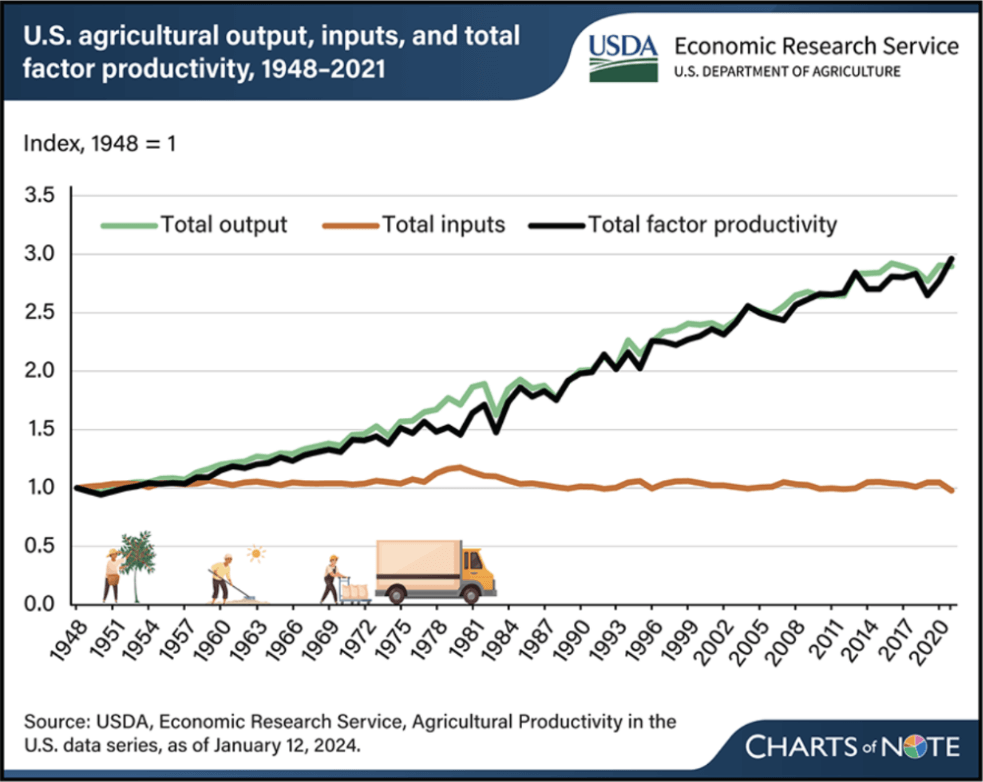
The adoption of insect-resistant Bt crops in particular has led to a significant decrease in the application of insecticides. According to a 2014 meta-study, GM crops have reduced chemical pesticide use by 37%. While increasing crop yields by 22%, and farmer profits by 68%. This reduction not only lowers the environmental footprint of agriculture but also reduces farmers’ exposure to harmful chemicals and decreases the cost of production.
Disadvantages: There have been concerns about the long-term sustainability of this reduction in pesticide use. Overreliance on a single GM trait, such as Bt toxin expression, could lead to the development of resistance among pest populations, potentially necessitating increased use of chemical pesticides or the development of new GM varieties.
Environmental impact of pesticides
Advantages: Beyond reducing pesticide use, GM crops engineered for herbicide tolerance can facilitate no-till farming practices, which have been associated with decreased soil erosion, improved water retention, and enhanced soil carbon sequestration. Additionally, by increasing yield per hectare, GM crops can help relieve the pressure to convert natural habitats into agricultural land, potentially conserving biodiversity.
Disadvantages: The environmental impacts of GM crop adoption also include concerns over biodiversity and non-target organisms. For example, there has been debate about potential impacts of herbicide-tolerant crops on weed diversity and the consequences for ecosystems. Additionally, gene flow from GM crops to wild relatives could potentially lead to the creation of “superweeds” resistant to conventional management practices. However, empirical evidence on the scale and significance of these impacts remains mixed, and the scientific community continues to monitor and study these phenomena.
Gene-edited crops, which can be produced more quickly and precisely than traditional GM crops, offer a new dimension to these debates. By enabling the modification of crops without introducing foreign DNA, gene editing has the potential to address some of the regulatory and public perception challenges faced by GM crops. However, the advantages and disadvantages associated with yield, pesticide use, and environmental impacts will require careful consideration and study as these technologies develop and are adopted more widely.
Addressing criticisms
Despite the promise of GM and gene-edited crops, some of the more extremist environmental groups, such as Greenpeace and the Environmental Working Group, have raised concerns about their sustainability and impact on human health.

Many of their criticisms reprise the entrenched positions they have taken targeting GMO crops introduced more than 30 years ago.
Greenpeace warns that the use of so-called gene (or genome) editing techniques like CRISPR-Cas9 could not only exacerbate the negative effects of industrial farming on nature, animals and people, but it could effectively turn both nature and ourselves (through the food we eat) into a gigantic genetic engineering experiment with unknown, potentially irrevocable outcomes.
Greenpeace raises concern that the widespread adoption of gene-edited crops with uniform traits may lead to a loss of genetic diversity within plant species. This loss could impact the resilience of ecosystems and hinder the ability of plants to adapt to changing environmental conditions or new pests and diseases. The NGO and numerous other environmental groups propose an alternative focus, on agroecology — a progressive idea in theory but a vague concept in practice.
Agroecology has become the latest buzzword in the agriculture sector—a mashup of the words “agriculture” and “ecology” with the latter being the relationship of organisms to one another and to their physical surroundings. However, its definition has become lost in translation from its original root.
At its core, the concept of agroecology is an ideal — however, the definition has changed, co-opted by the organic industry to promote its practices, some of which are outdated and not very sustainable. Many of its proponents, such as controversial populist activist philosopher Vandana Shiva, demonize sustainable intensification and advance their definitions of agriculture. Shiva takes agroecology to mean traditional low- to medium-yield organic farming, which could not hope to meet the escalating food needs of a world whose population is expected to increase by 50% by midcentury.
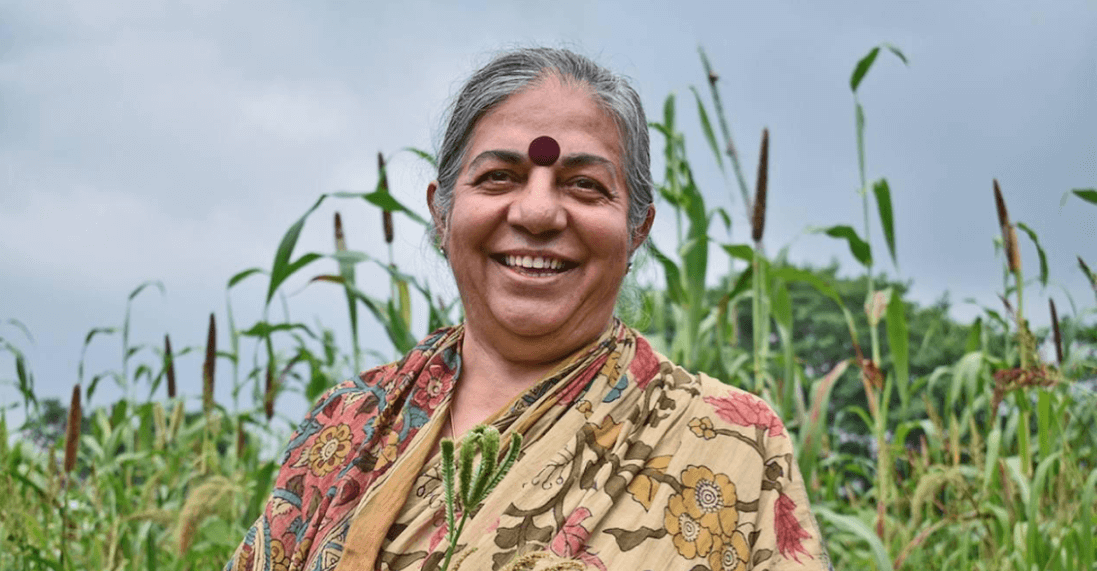
The consensus among scientists is that many of the criticisms of GM and gene-edited crops leveled by Shiva et al. are more ideological than science-based, and that genetic tinkering of one form or another is crucial for sustainable agriculture.
Plant genome editing molecular tools are beginning to rewrite the debate over GM crops, as they facilitate their development without incorporating transgenic modifications. While it is important to integrate into planning the potential environmental impacts of GM and gene-edited crops, as well as the crop chemicals sometimes paired with them, concerns must always be balanced with the unique challenges posed by climate change and global food security over the coming decades.
Can GM and gene-edited crops protect against climate change, increase yields, and reduce pesticides?
Genetically modified and gene-edited crops offer the potential to significantly enhance agricultural sustainability and improve food security. These complementary technologies involve the alteration of a plant’s genetic material to achieve desired traits such as increased yield, pest and disease resistance, or adaptability to environmental stresses.
According to the Intergovernmental Panel on Climate Change (IPCC), extreme weather events will disrupt and decrease global food supply and drive higher food prices. Numerous genetic-based solutions are in development.
Gene editing, particularly through CRISPR/Cas9, is an emerging tool in addressing the negative impacts of climate change on agriculture. It offers improvements for land sparing (orange), nutrition (blue), disease (green) and abiotic stress tolerance (red), as seen in the graphic below.
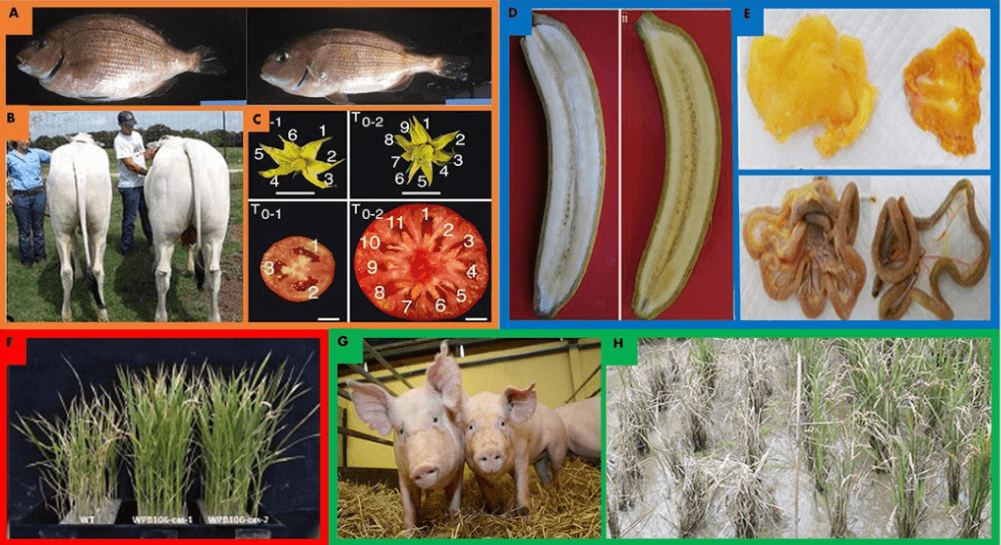
Gene editing has been used to increase abiotic stress tolerance, improve disease resistance, enhance nutritional quality, and boost yields. These traits are paramount as climate change worsens. It has also been applied to design insect pest resistance in plants, which is crucial in the face of severe weather events and insect infestations exacerbated by climate change.
Advantages: Genetically engineered crops have been tweaked for traits that directly contribute to yield improvements. For instance, Bt cotton and Bt corn, which have been modified to express the Bacillus thuringiensis (Bt) toxin, are resistant to specific insect pests, leading to lower crop damage and higher yields. A recent meta-analysis found that GM crop adoption has increased crop yields by 21% on average due to reduced pest pressure and increased crop health. Additionally, drought-tolerant varieties of crops, such as GM maize, have shown the potential to maintain yields under water stress conditions, which is crucial in regions facing erratic rainfall patterns due to climate change.
Disadvantages: The benefits of yield improvements may not be uniformly distributed across all regions and farming systems. Smallholder farmers in developing countries, for instance, may face barriers to adopting GM technology, including high seed costs and intellectual property rights issues, limiting their ability to realize these yield benefits. Benefits in poorer countries will be more significant when these structural issues are addressed.
Land-Sparing vs. Land-Sharing: Does sustainable intensification preserve biodiversity?
Land-sparing and land-sharing represent two fundamentally different approaches to balancing the need for agricultural productivity with the imperative to conserve biodiversity.
Land-sparing is a conservation strategy that, in the context of rapid population growth and increasing climate instability offers a potential pathway to preserve biodiversity and enhance agricultural productivity. It is grounded in the belief that high-yield farming may better conserve wild nature outside of agricultural lands compared to lower-yield, more wildlife-friendly methods that minimize environmental impacts.
Conversely, land-sharing integrates agricultural production with biodiversity conservation, promoting wildlife-friendly farming practices that allow animals and plants to thrive within cultivated areas, Critics of land-sparing argue that it can lead to intensive farming practices that might degrade the soil and water quality. Supporters, however, contend that land-sparing, by protecting undisturbed habitats, effectively conserves more species. Land-sharing, on the other hand, is often criticized for not providing the high-quality habitats that many species require to survive. Proponents believe it offers a more holistic approach to managing agricultural landscapes in a way that supports both production and biodiversity.
Addressing Climate Instability
As climate change disruptions escalate, roiling weather patterns and making water scarcer, the need to produce more food on less land becomes increasingly critical. Land-sparing is appealing as it aims to maximize yields from smaller areas of intensively farmed land, thus leaving more untouched land for conservation. However, this approach must be supported by sustainable practices such as precision agriculture, which uses technology to optimize field-level management regarding crop farming.
- Enhanced Ecosystem Services: By protecting untouched natural areas from agricultural encroachment, land-sparing helps maintain ecosystem services such as flood mitigation, groundwater replenishment, and habitat for pollinators and other wildlife. These services are vital for sustaining agricultural productivity and resilience against climate shocks.
- Carbon Storage: Protected natural habitats can continue to act as carbon sinks, absorbing CO2 from the atmosphere. This role is crucial to managing the impact of climate change, helping to stabilize global temperatures, and reduce the occurrence of extreme weather events, which can be devastating for agriculture.
- Biodiversity Conservation: Maintaining biodiversity through land-sparing can lead to healthier ecosystems, which are better able to resist and recover from climate instabilities. Biodiverse systems can also be sources of genetic material important for breeding new varieties of crops that are more resilient to pests, diseases, and changing climate conditions.
Genetically engineered crops and sustainable intensification
Advancements in genetic engineering and gene editing open the door to engineering crops for traits such as drought resistance, higher yields, and reduced reliance on chemical inputs like fertilizers and pesticides. These technologies could play a pivotal role in sustainable intensification.
For instance, drought-resistant crops can maintain productivity during dry spells, reducing the need to expand farmland into natural habitats (a key aspect of land-sparing). Similarly, crops engineered to utilize nutrients more efficiently can lead to less nutrient runoff into nearby ecosystems, aligning with the land-sharing approach by minimizing the ecological footprint of agricultural practices.
Glyphosate as a tool for sustainable intensification?
Glyphosate, a broad-spectrum systemic herbicide and crop desiccant, has been at the center of the debate over agricultural sustainability for decades. It is particularly effective in managing weeds, which can significantly reduce crop yields. The use of glyphosate can facilitate the practice of no-till farming, where the soil is not turned over between seasons. No-till farming can enhance soil health and carbon sequestration, reduce erosion, and decrease the need for mechanical weeding, which uses fossil fuels.
However, concerns about its potential impacts on biodiversity and human health have led to calls for stricter regulations. In the context of sustainable intensification, the challenge is to balance the benefits of glyphosate in maintaining high agricultural productivity with the need to mitigate its ecological and health impacts.
The debate between land-sparing and land-sharing is complex and multifaceted, with no one-size-fits-all solution. Both strategies have their merits and drawbacks, influenced by local ecological, social, and economic factors. The integration of advanced technologies like genetically engineered and gene-edited crops, along with sophisticated weed management systems, could tip the scales toward more sustainable agricultural practices. However, careful consideration and management of these technologies’ ecological and health impacts are crucial. As the world grapples with the challenges posed by a changing climate, the choices made today will shape the sustainability of our food systems and the health of our planet for generations to come.
Quantifying global trends in biotech crops and sustainability
The developments in herbicide use, resistance, and their environmental impacts are repositioning the trajectory of global agriculture and its sustainability. Here we delve into statistical analyses, provide a global perspective, and explore outlooks based on current data and research.
Predicting the future of herbicide use and its environmental impact is challenging. Models suggest that without significant shifts towards integrated weed management and alternative cropping systems, herbicide resistance will continue to escalate, potentially leading to increased use of more toxic herbicides or higher application rates. In response, the agricultural sector is exploring several avenues:
- Innovation in herbicide development: New modes of action are being researched to combat resistance, although bringing these to market is a long-term process. For example, Bayer is using artificial intelligence to develop what it hopes will be an effective alternative to glyphosate, and anticipates it could be brought to market within four years.
- Gene editing and GM crops: Advances in gene editing could create crops with enhanced weed competitiveness or tolerance to alternative, less environmentally impactful herbicides.
- Integrated weed management (IWM): There’s a growing emphasis on IWM, a technique that combines mechanical, biological, and chemical control methods tailored to specific environments and cropping systems.
- Regulatory and policy shifts: Enhanced regulatory reforms, especially in regard to gene editing, could promote the adoption of sustainable practices and technologies that reduce reliance on herbicides.
Weed management and ecosystem health
Weed management is a critical aspect of agricultural practices that significantly influences ecosystem health, crop production, and biodiversity. Effective weed management strategies can help maintain ecological balance, ensuring productive agricultural systems while conserving biodiversity.
Weeds, often seen solely as agricultural pests, play a complex role in ecosystems. They can be a part of the habitat’s biodiversity, providing food and shelter for a variety of organisms, including beneficial insects, birds, and mammals. However, aggressive and invasive weed species can outcompete native plants, disrupt local ecosystems, and diminish biodiversity. In agricultural settings, unchecked weed growth can lead to significant crop losses by competing for light, water, and nutrients. Recent innovations in technology are transforming weed management practices, offering new ways to tackle weed control with greater efficiency and less environmental impact.
- Robotic weeders: These machines can navigate through crop rows, using sensors to identify weeds and remove them mechanically or apply targeted herbicide applications. This technology significantly reduces the need for broad-spectrum herbicide applications, limiting chemical exposure to non-target plants and organisms.
- Artificial intelligence (AI) and machine learning: AI is being used to develop algorithms that can distinguish between crops and weeds accurately. This allows for precise herbicide application or mechanical removal, reducing waste and environmental impact.
- Precision agriculture technologies: Drones, satellites, and sensor-based systems enable the mapping of weed infestations across large areas. This data can be used to implement site-specific weed management strategies, optimizing the timing and methods of control measures to target weed populations more effectively.
These innovations represent a move towards more precise and sustainable weed management practices. By reducing the reliance on chemical control methods and promoting the use of mechanical and biological techniques, they contribute to the preservation of ecosystem health and biodiversity. As research and development in this area continues, weed management will become even more efficient, sustainable, and integrated into broader agricultural management systems, ensuring food security while protecting natural resources.
Cost-benefit analyses
The adoption of herbicides and GM crops can offer significant economic benefits to farmers by increasing crop yields and reducing losses from pests and weeds. For example, a 2014 meta-analysis found that GM crops have increased crop yields by 22% and farmer profits by 68%. Herbicide-tolerant crops allow for more efficient weed control, reducing labor costs and improving crop uniformity.
However, the economic advantages can vary significantly between small and large farms. Large farms often have better access to the technologies and capital needed to adopt and benefit from GM crops and advanced herbicides. In contrast, smallholder farmers may face barriers such as high seed costs, intellectual property rights issues, and lack of access to suitable herbicides or application technology, potentially widening the gap between small and large farming operations.
Impacts on small vs. large farms
The economic viability of GM crops and herbicides for small farms depends on several factors, including the regulatory environment, the availability of credit, and the presence of supportive infrastructure and markets. In some cases, specific programs designed to support smallholder adoption of these technologies have shown success, indicating that with appropriate support, the benefits of GM crops and herbicides can be more equitably distributed.
Policy and regulation
Policies and regulations play a pivotal role in shaping sustainable weed management practices and the adoption of GM crops. At the international level, agreements such as the Cartagena Protocol on Biosafety regulate the transboundary movement of GM organisms, aiming to protect biological diversity while ensuring the safe handling of GM crops. National policies vary widely, with some countries embracing GM crops and others adopting more cautious or restrictive approaches based on the precautionary principle.
Regulatory frameworks also govern herbicide approval and use, with agencies such as the EPA in the United States and the European Food Safety Authority in the EU conducting rigorous assessments to ensure that herbicides do not pose unacceptable risks to human health or the environment. These regulations influence the availability and use of herbicides, impacting farming practices and economic outcomes.
Effective policy and regulation are critical for balancing the benefits of herbicides and GM crops with potential risks, ensuring that these technologies contribute to sustainable and equitable agricultural development.
Health and safety
The public health implications of herbicide use and GM crop cultivation are a significant concern, encompassing both direct impacts on worker safety and indirect effects on consumers through residues in food products.
Safe herbicide use practices are essential to protect farm workers from exposure to potentially harmful chemicals. This includes proper training in herbicide application, the use of personal protective equipment, and adherence to safety protocols. Regulatory agencies set exposure limits and safety standards to mitigate risks, but enforcement and compliance are crucial for protecting worker health.
Consumer protection
Regulatory bodies also establish maximum residue limits (MRLs) for herbicides in food products to protect consumers. Continuous monitoring and testing ensure that food products comply with these standards, minimizing risk to consumers. Additionally, the safety of GM crops for human consumption is thoroughly evaluated before approval, with numerous studies confirming that approved GM crops are as safe to eat as their non-GM counterparts.
Public education and transparency about these safety assessments and regulatory protections are vital for addressing public concerns and ensuring confidence in the safety of agricultural products.
In summary, the socio-economic considerations surrounding herbicide use and GM crops encompass a wide range of issues, from economic impacts on farmers and the role of policy and regulation in promoting sustainable practices, to the critical importance of ensuring public health and safety. Balancing these considerations requires careful policy design, ongoing scientific research, and effective communication and education efforts to navigate the challenges and opportunities of modern agriculture.
Towards a sustainable agricultural future
Achieving sustainable agriculture requires a careful balance among various competing interests: environmental conservation, health and safety concerns, and the economic realities faced by farmers around the world. Weed management, as a critical component of agricultural practices, embodies this challenge. Effective strategies must control weed populations to maintain crop yields and food security, reduce reliance on chemical inputs to protect environmental and human health, and remain economically accessible to farmers of all sizes. Embracing integrated pest management (IPM) practices, adopting innovations in crop genetics, and supporting the development of precision agriculture technologies are steps toward finding this equilibrium.
The dynamic nature of agricultural ecosystems, evolving weed resistance, and the uncertain impacts of climate change underscore the necessity for ongoing research and innovation. There is a pressing need to develop new herbicides with novel modes of action, to explore the potential of gene editing for creating more resilient crop varieties, and to advance mechanical and biological weed control methods. Research must also investigate the socio-economic impacts of these technologies to ensure they are accessible and beneficial across the spectrum of global agriculture, from smallholder farms in developing nations to large-scale operations in developed countries.
Sustainable agriculture is a collective endeavor that requires the active engagement of multiple stakeholders. Farmers, as the custodians of our agricultural lands, need tools, training, and resources to implement sustainable practices effectively. Scientists and researchers play a critical role in advancing our understanding of agricultural systems and developing new technologies. Policymakers and regulators must craft and enforce policies that support sustainable practices while protecting public and environmental health. Finally, the public, including consumers and environmental advocates, must be informed and engaged in discussions about agricultural practices and policies to build broad support for sustainable approaches.
The journey towards a sustainable agricultural future is complex and challenging, yet undeniably essential. By fostering collaboration among all stakeholders, prioritizing research and innovation, and adopting a balanced approach to weed management and crop production, we can navigate these challenges. Together, we can ensure that our agricultural systems are resilient, sustainable, and capable of supporting global food security and environmental health for generations to come.
Jon Entine is the Executive Director of the Genetic Literacy Project and a life-long journalist with 20 major journalism awards. Follow him on X @JonEntine

